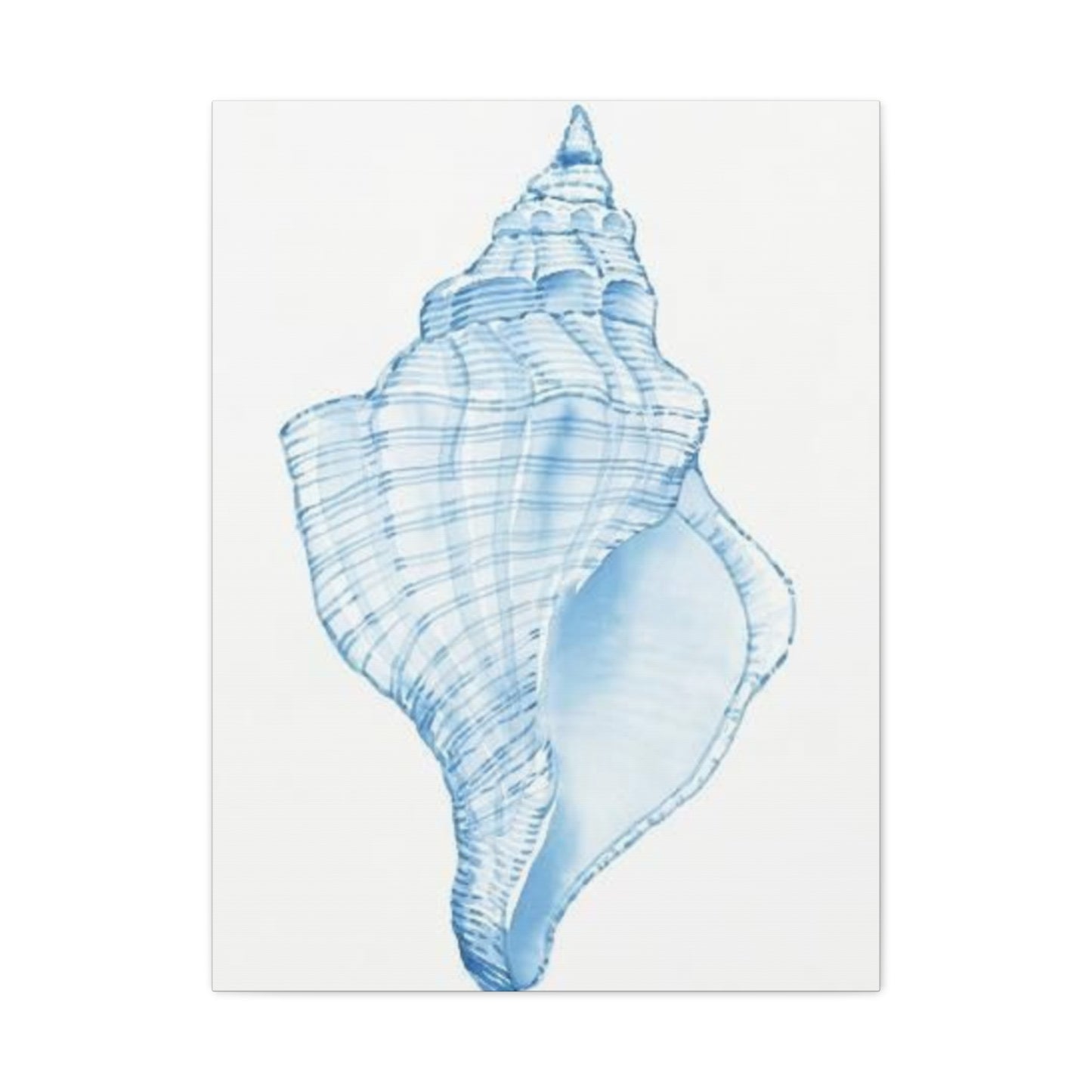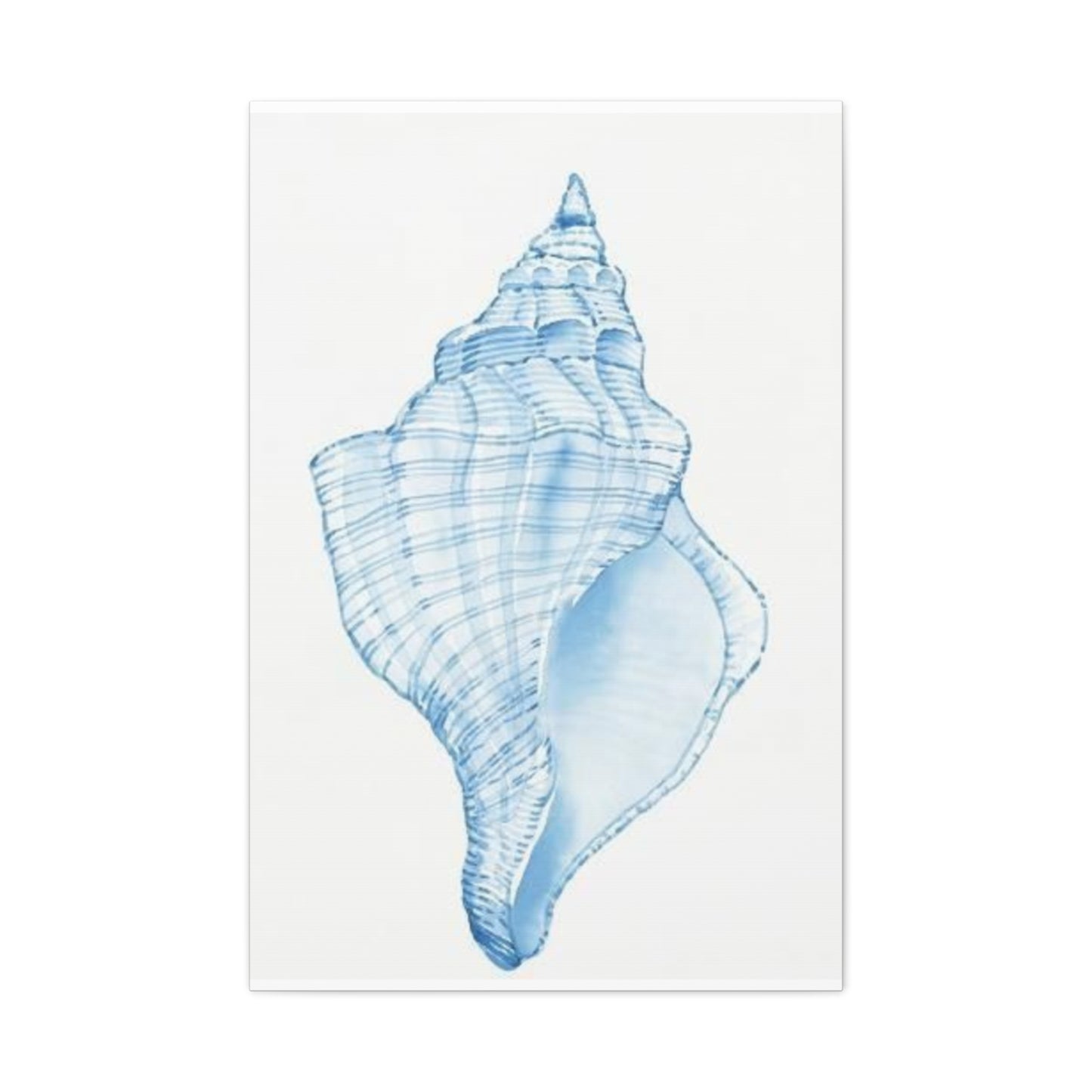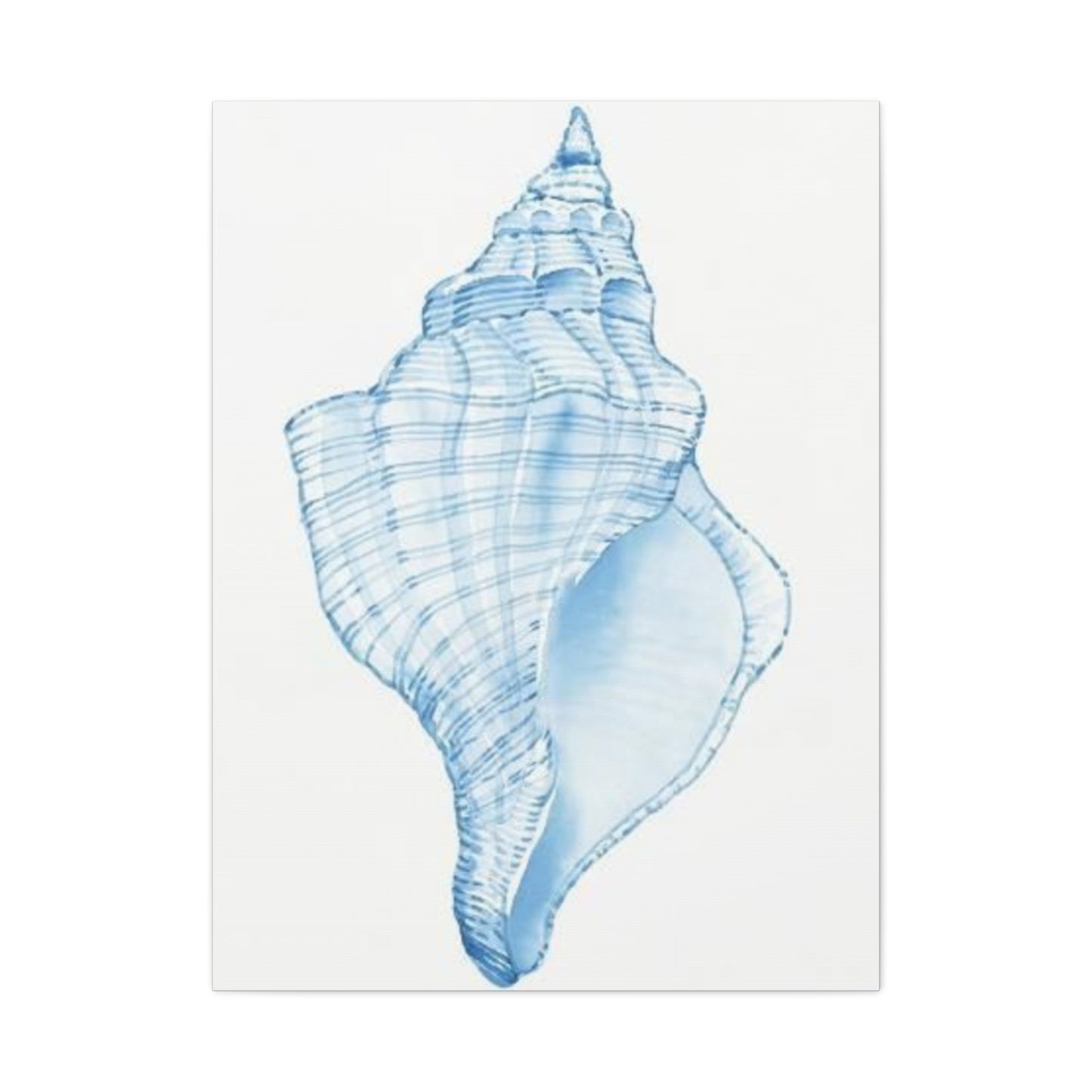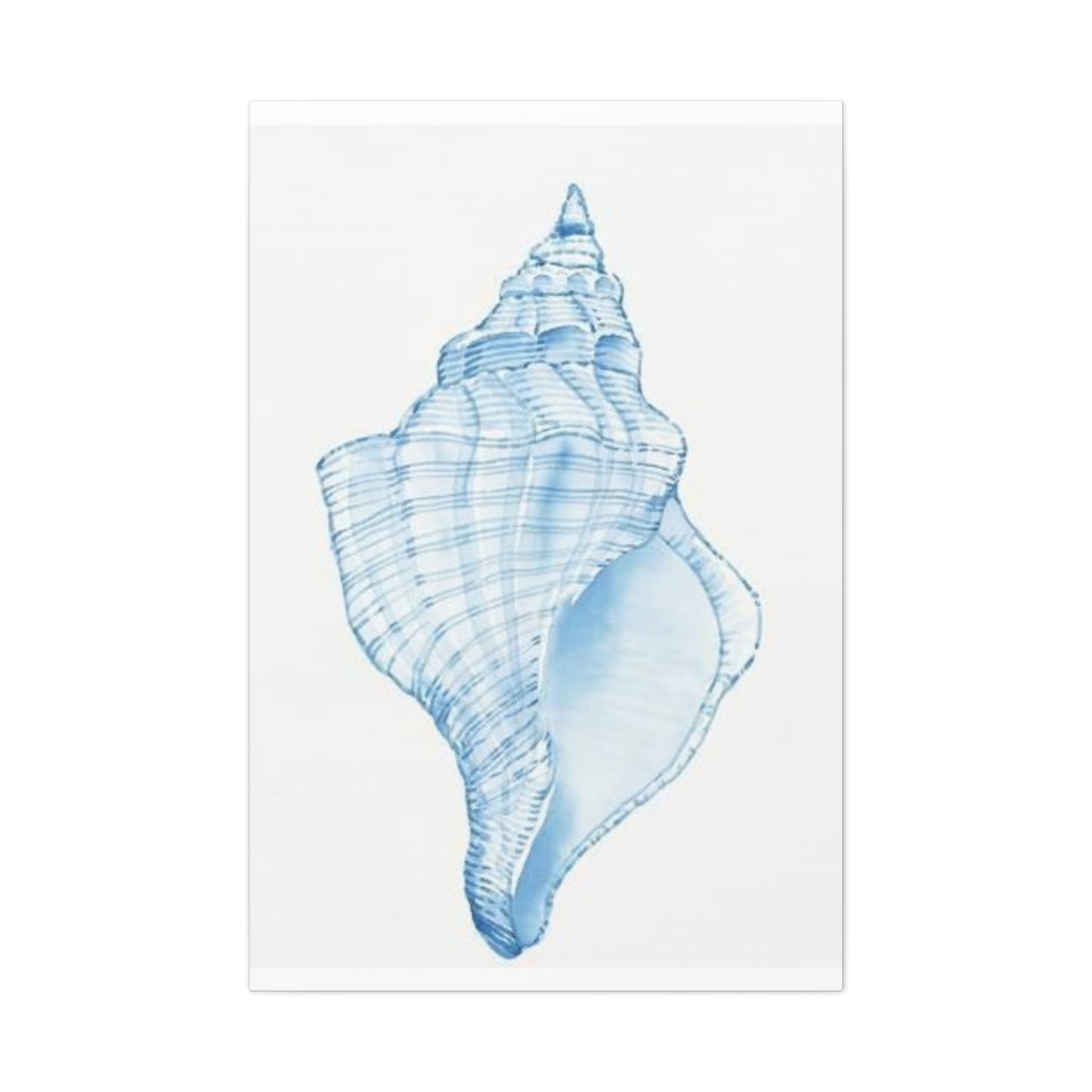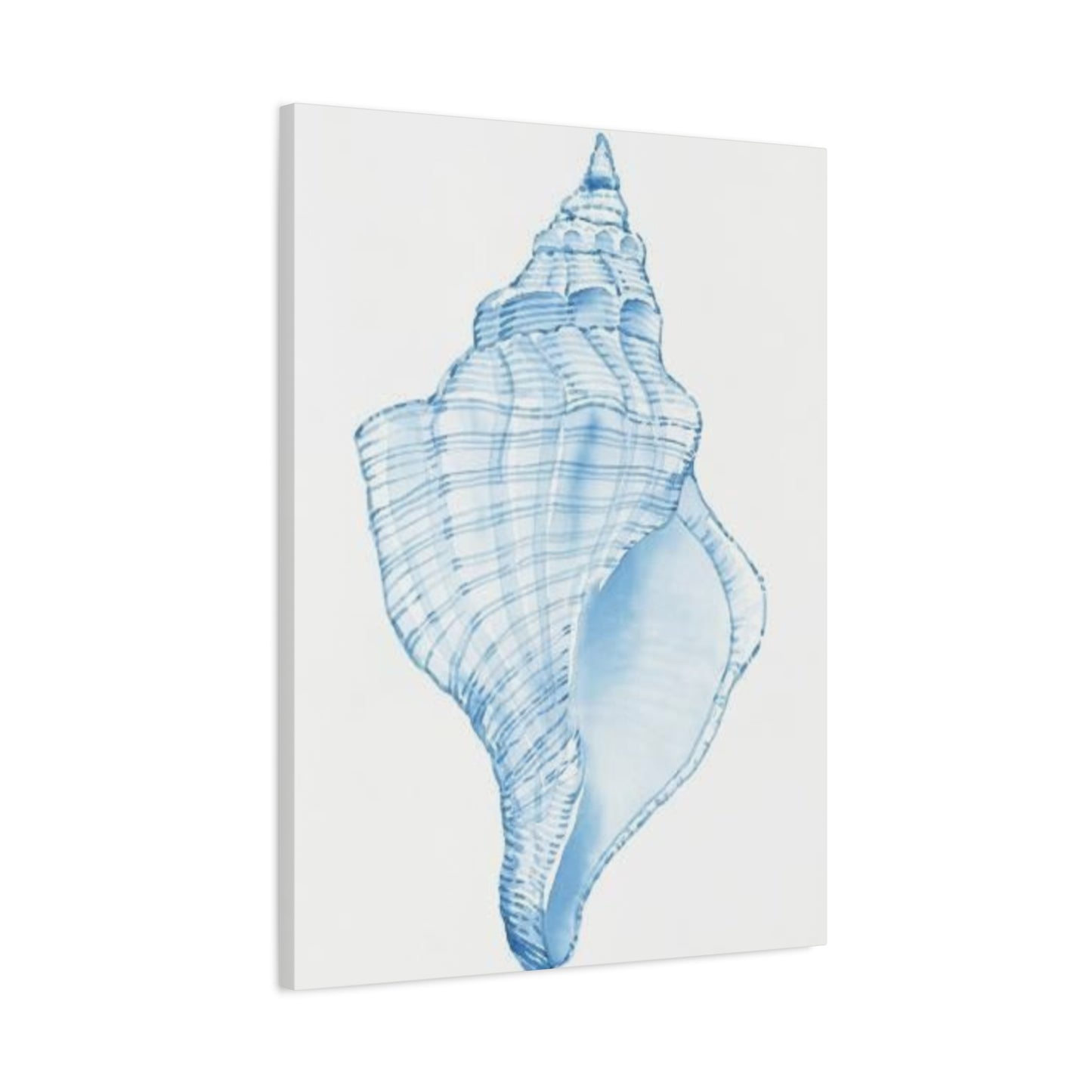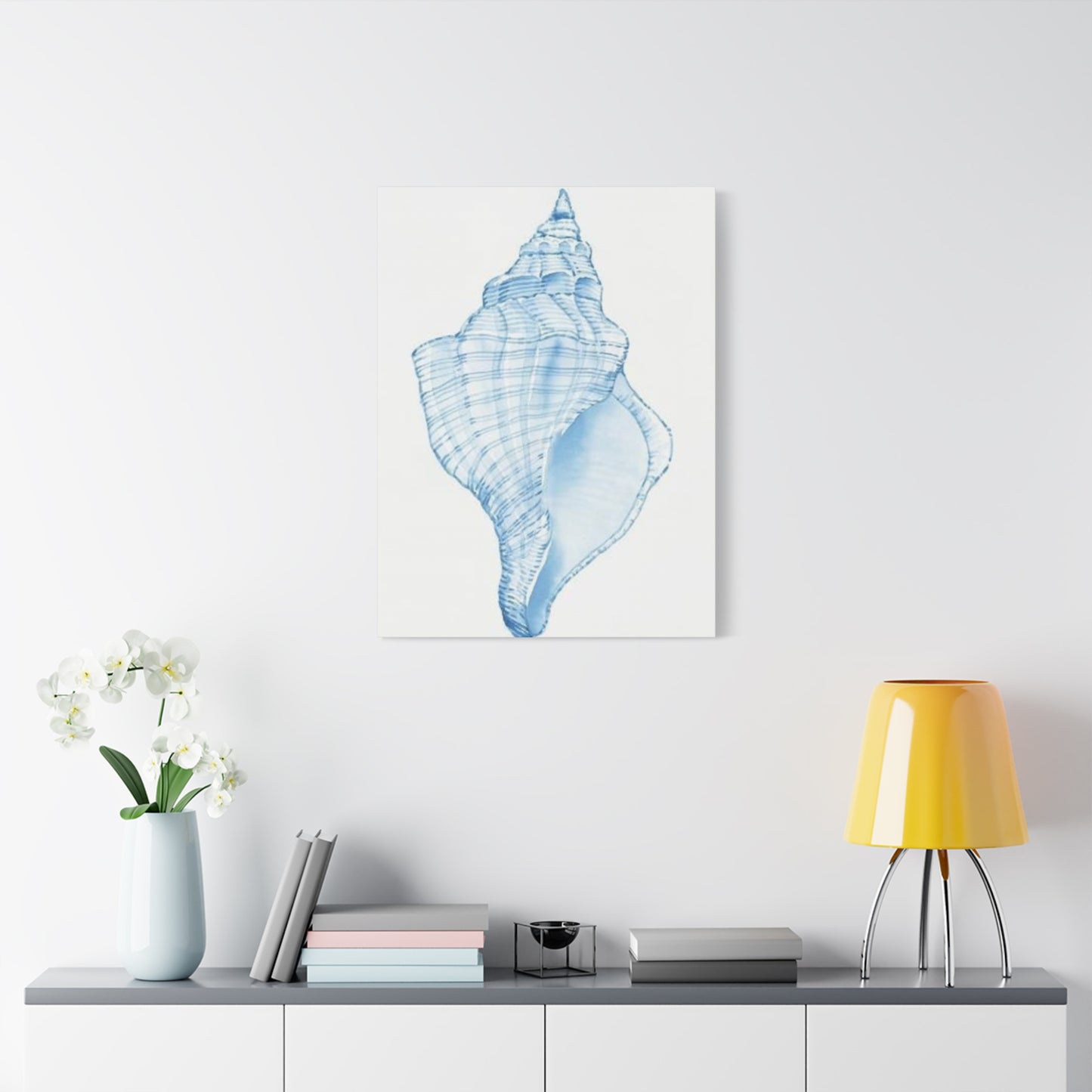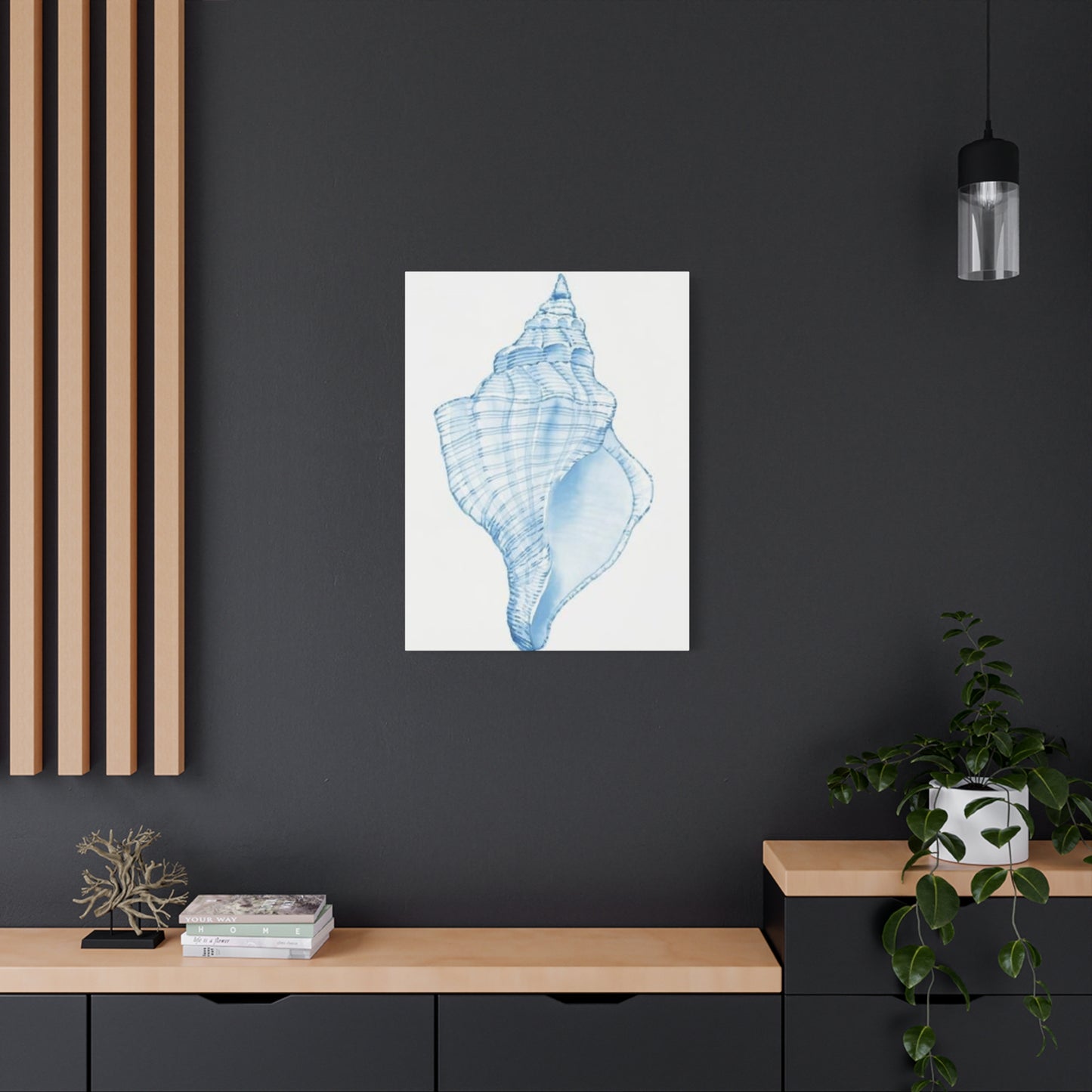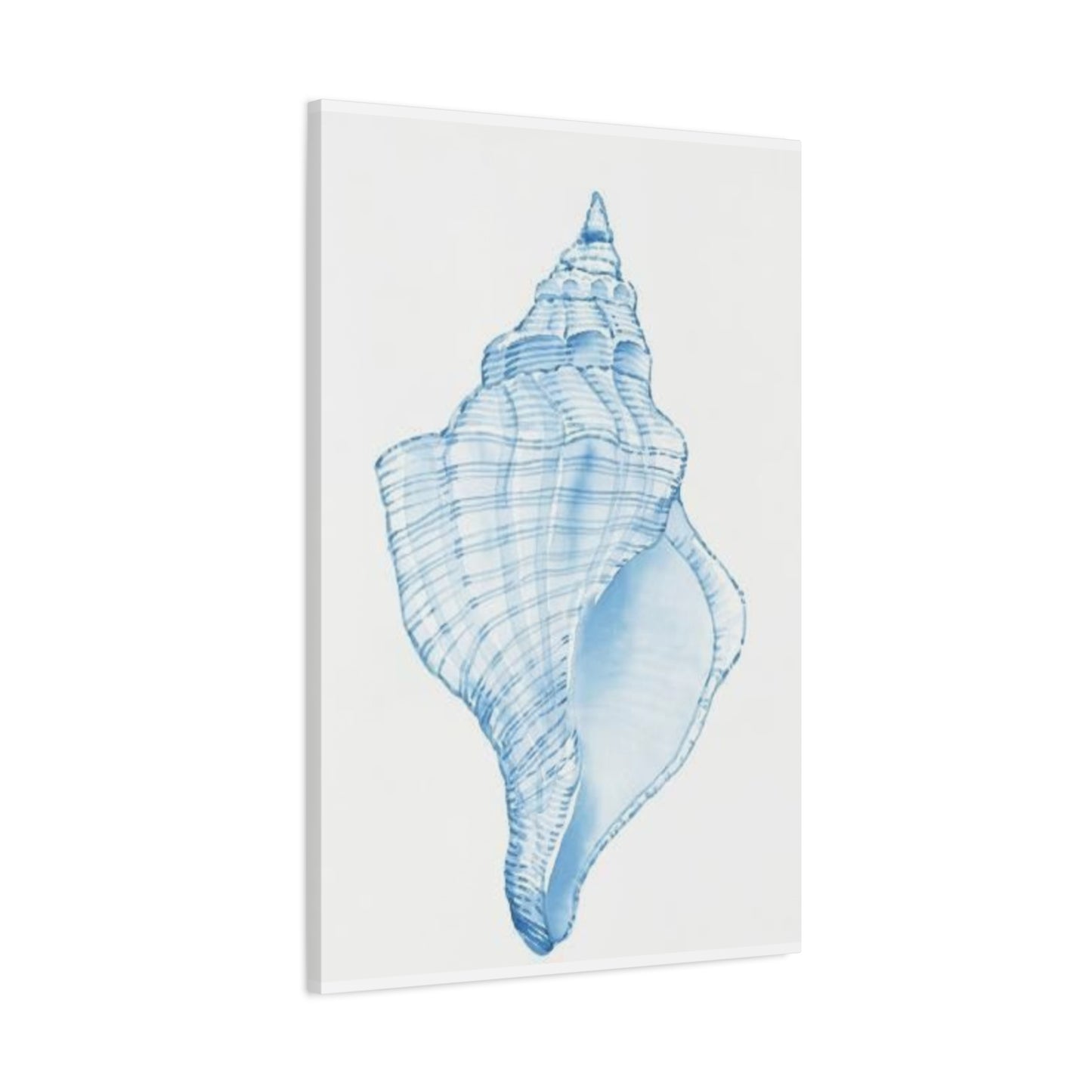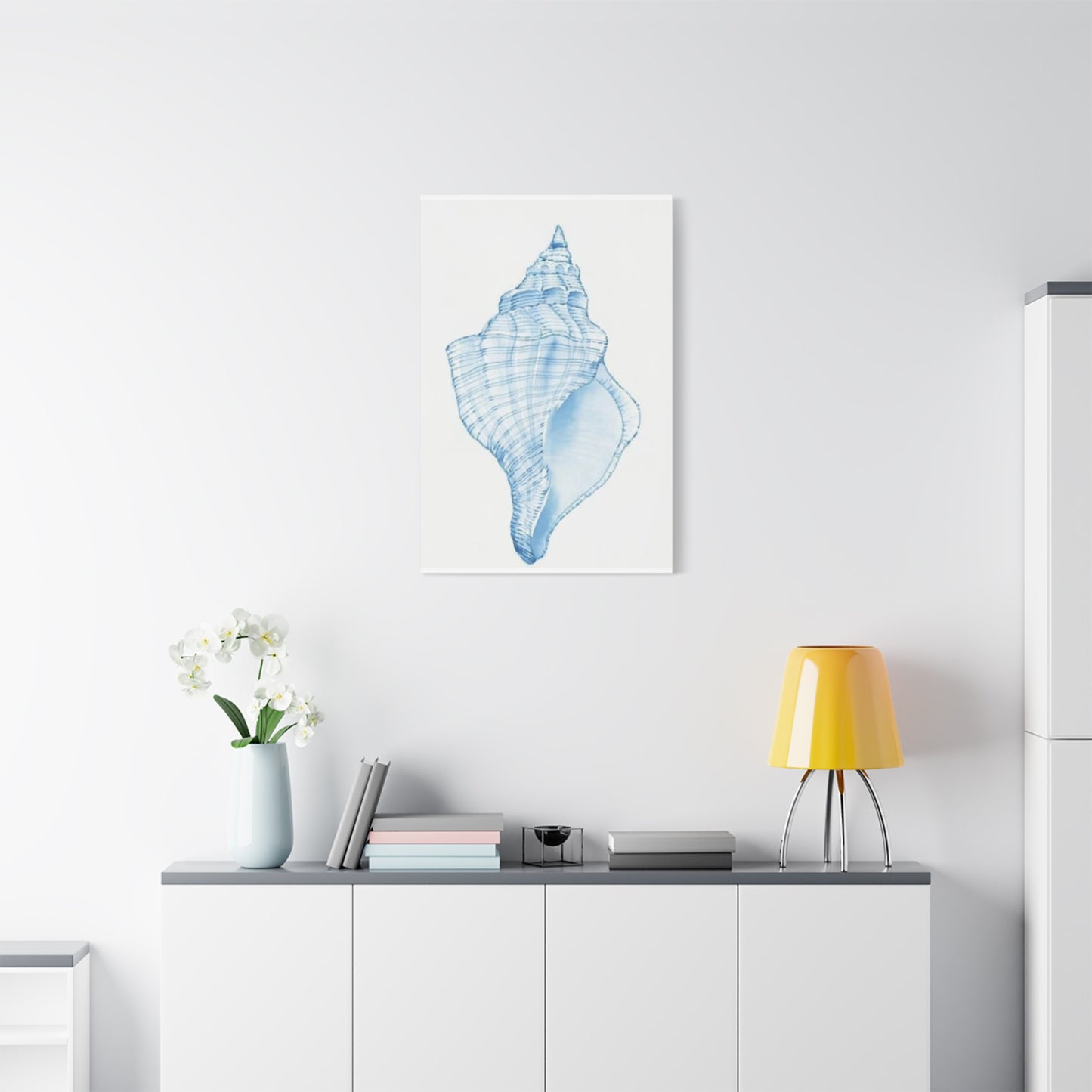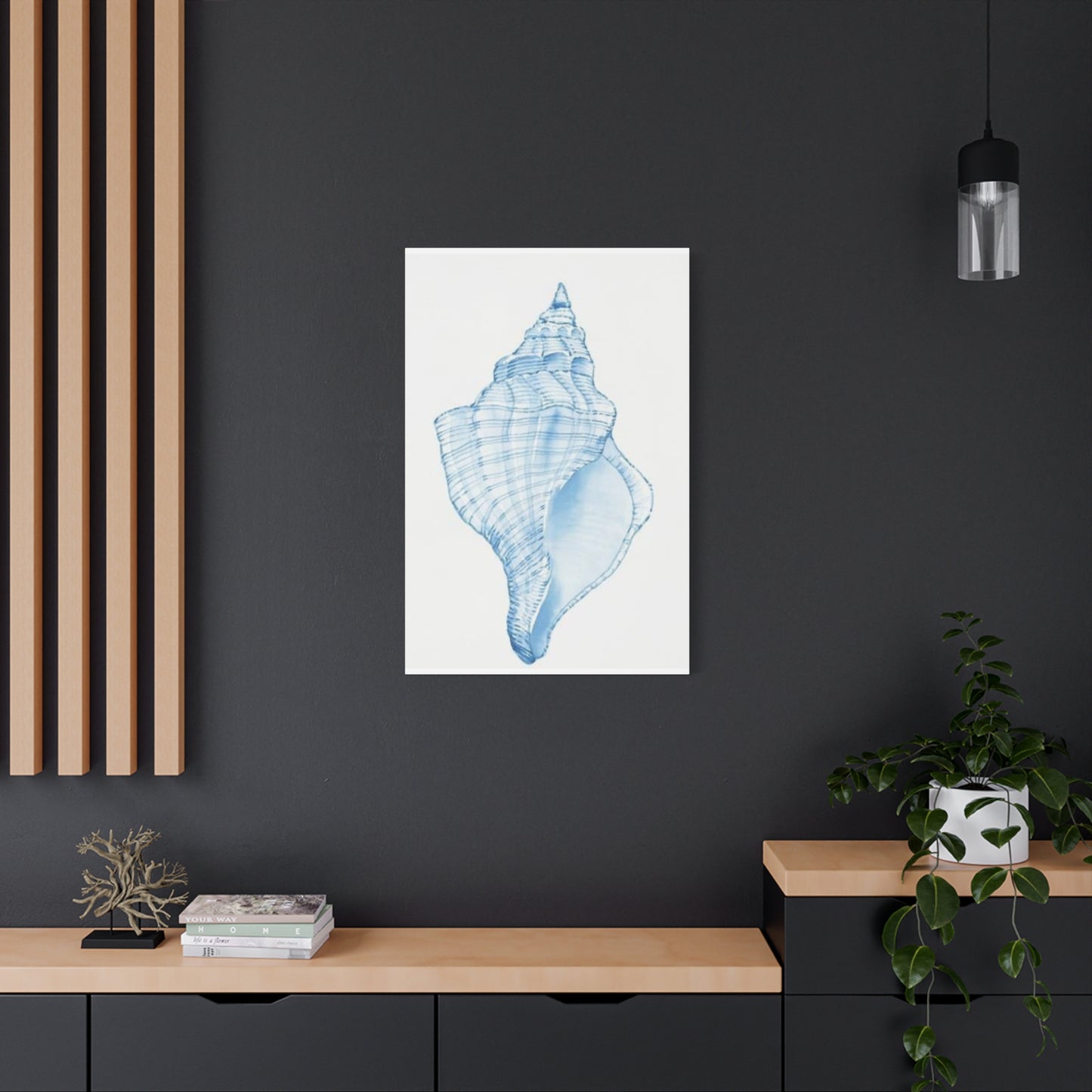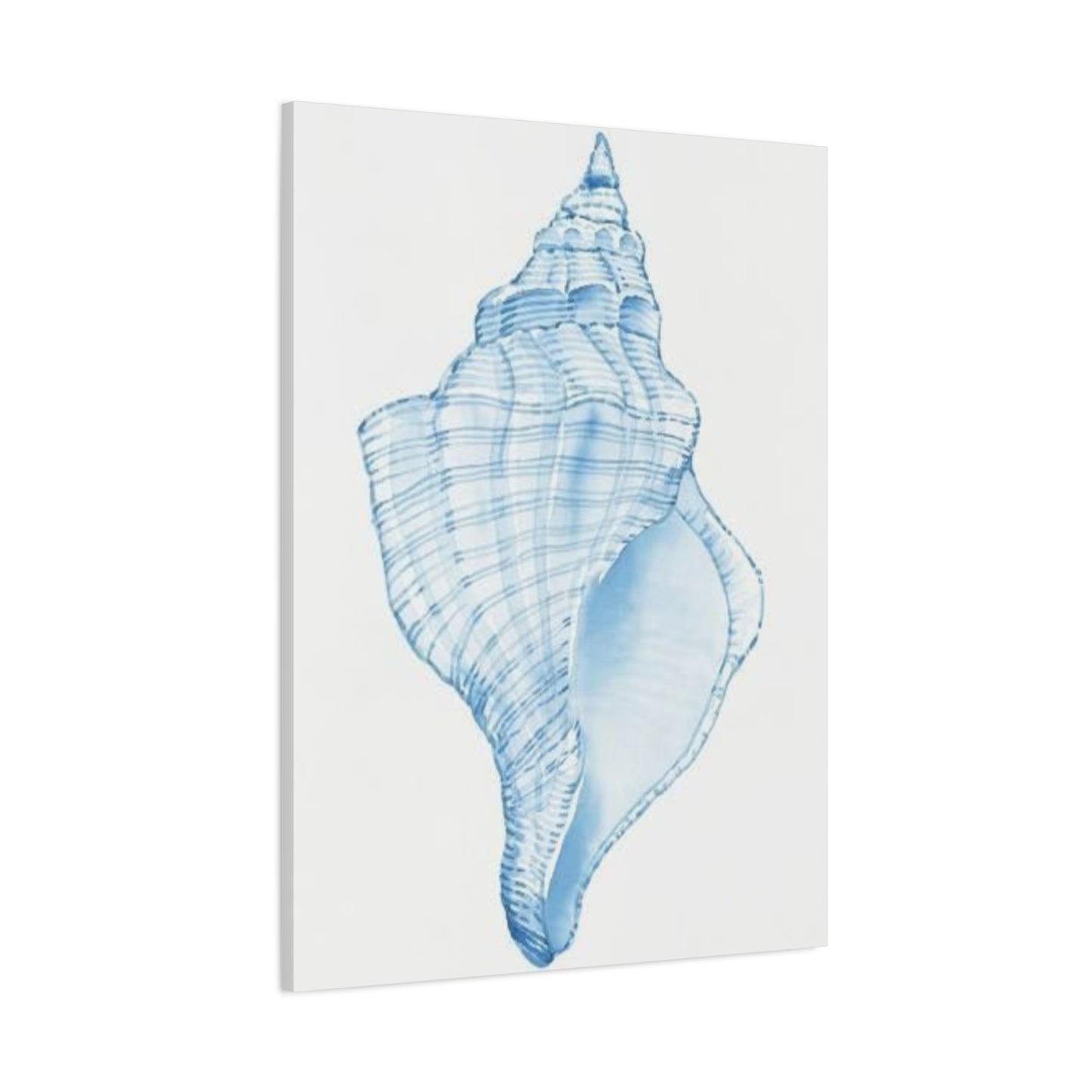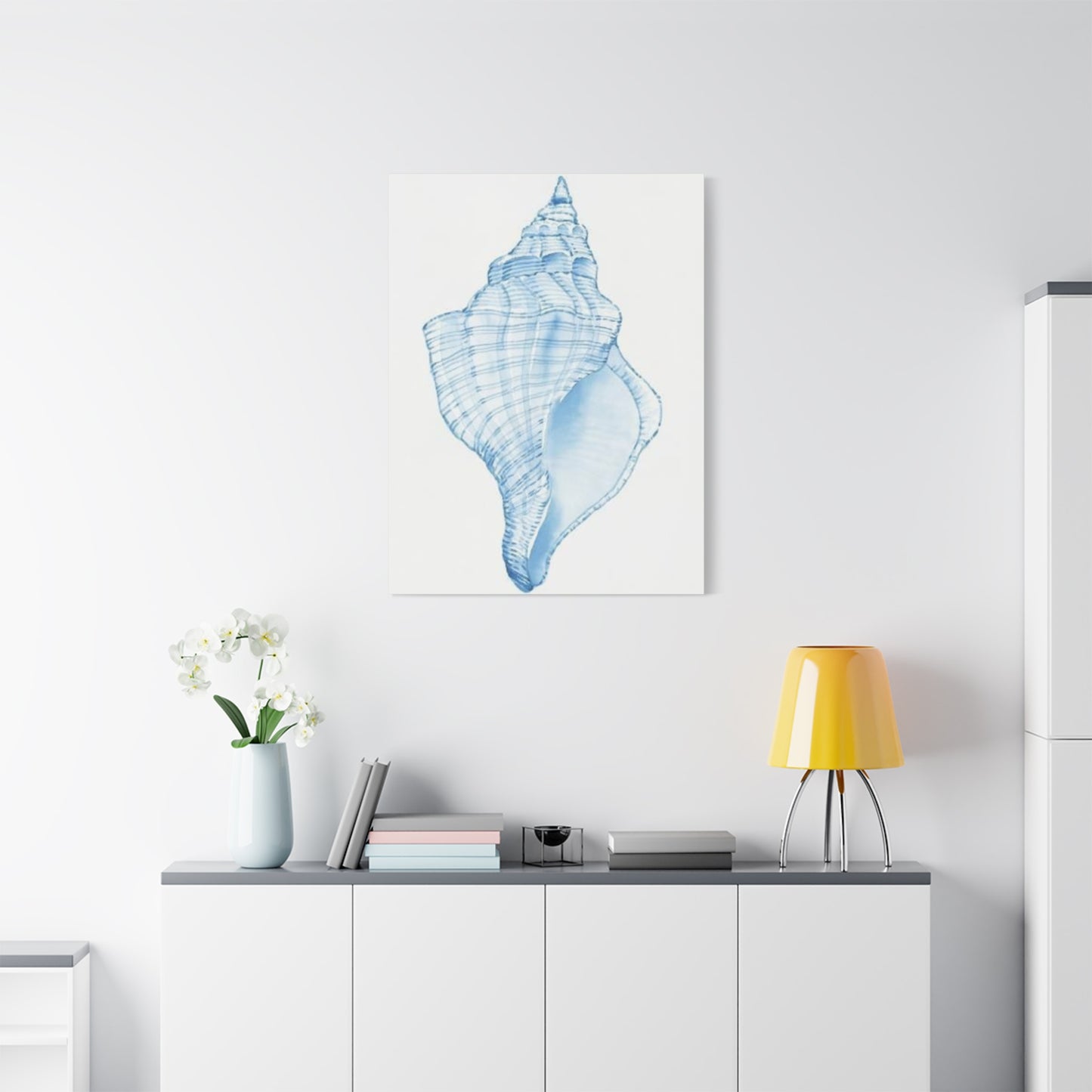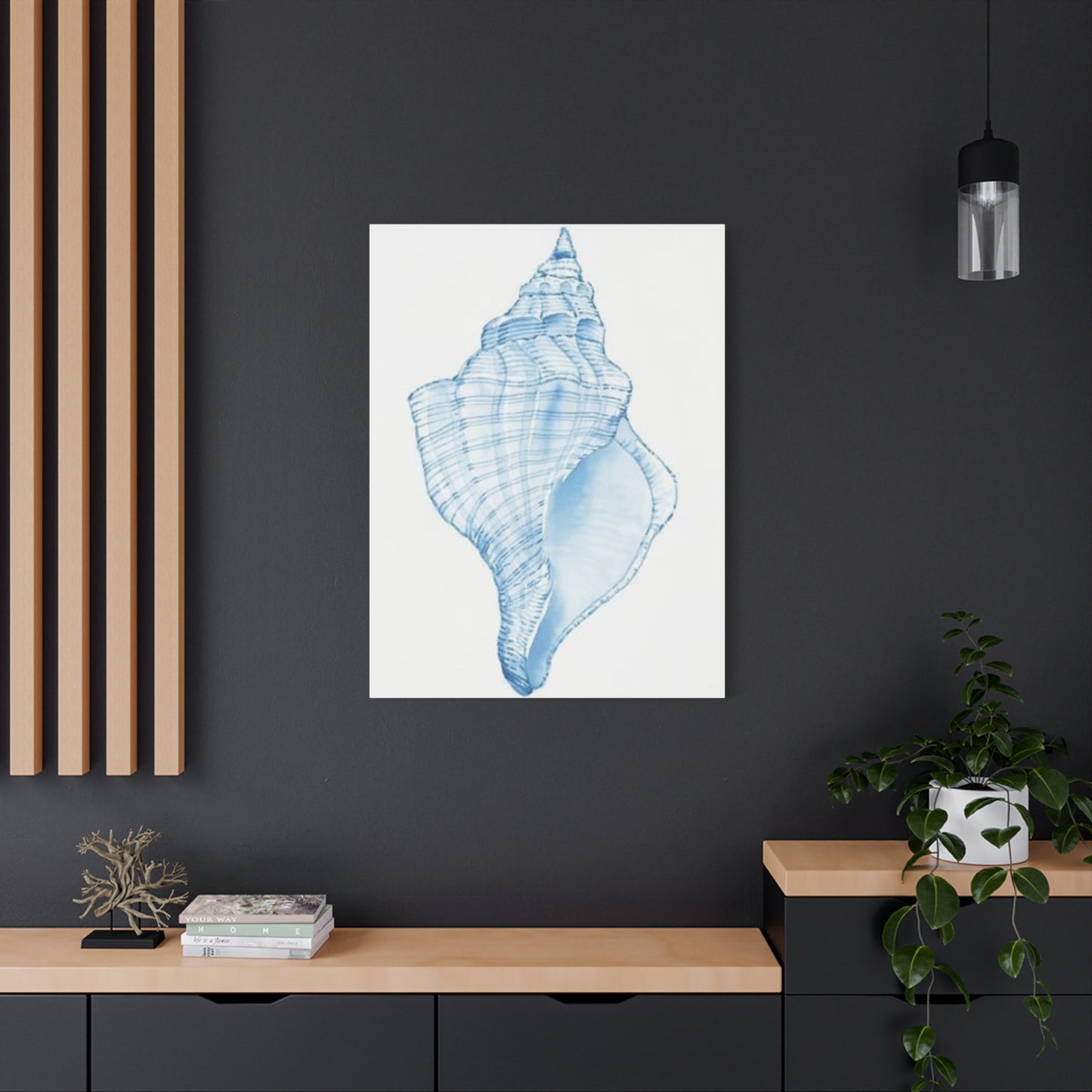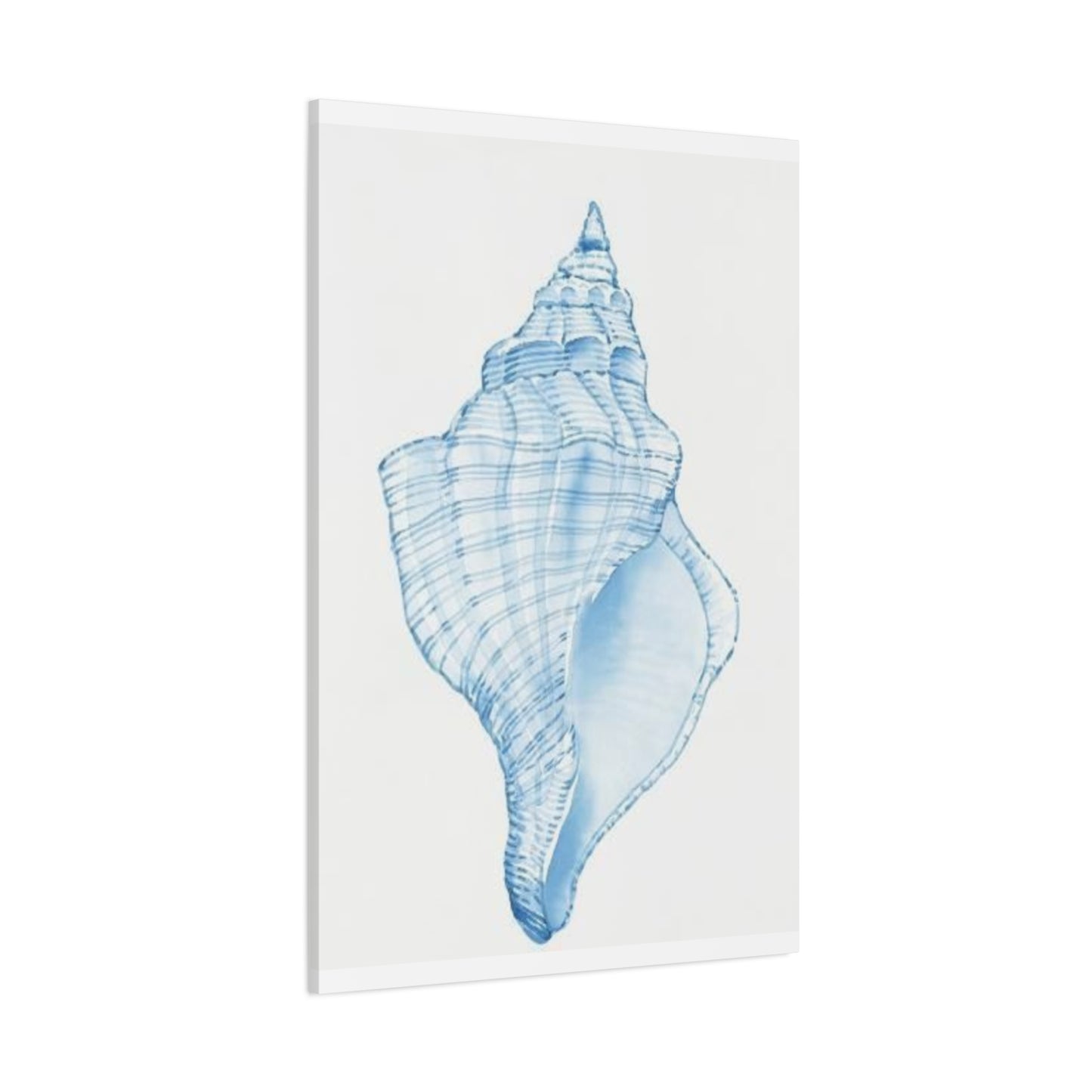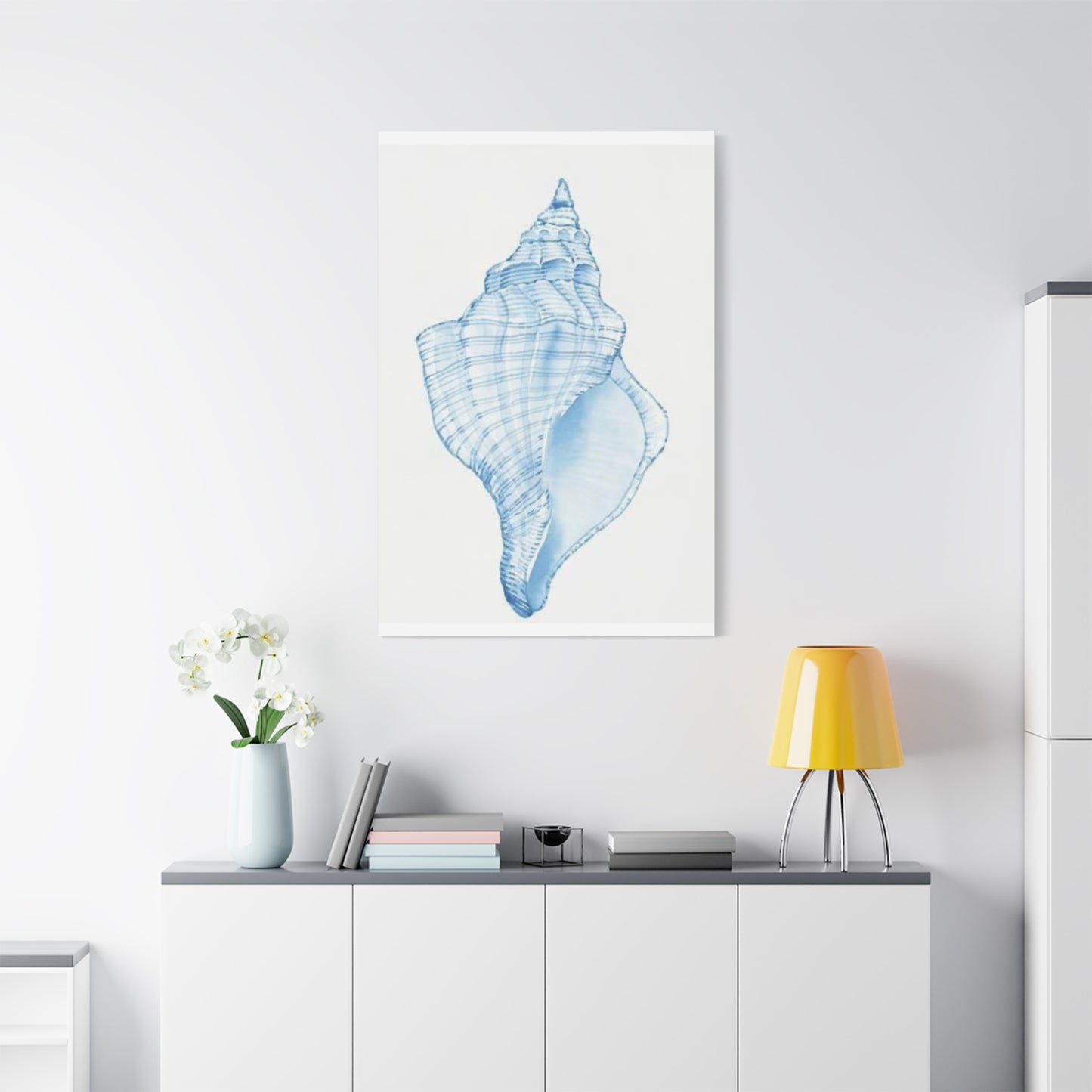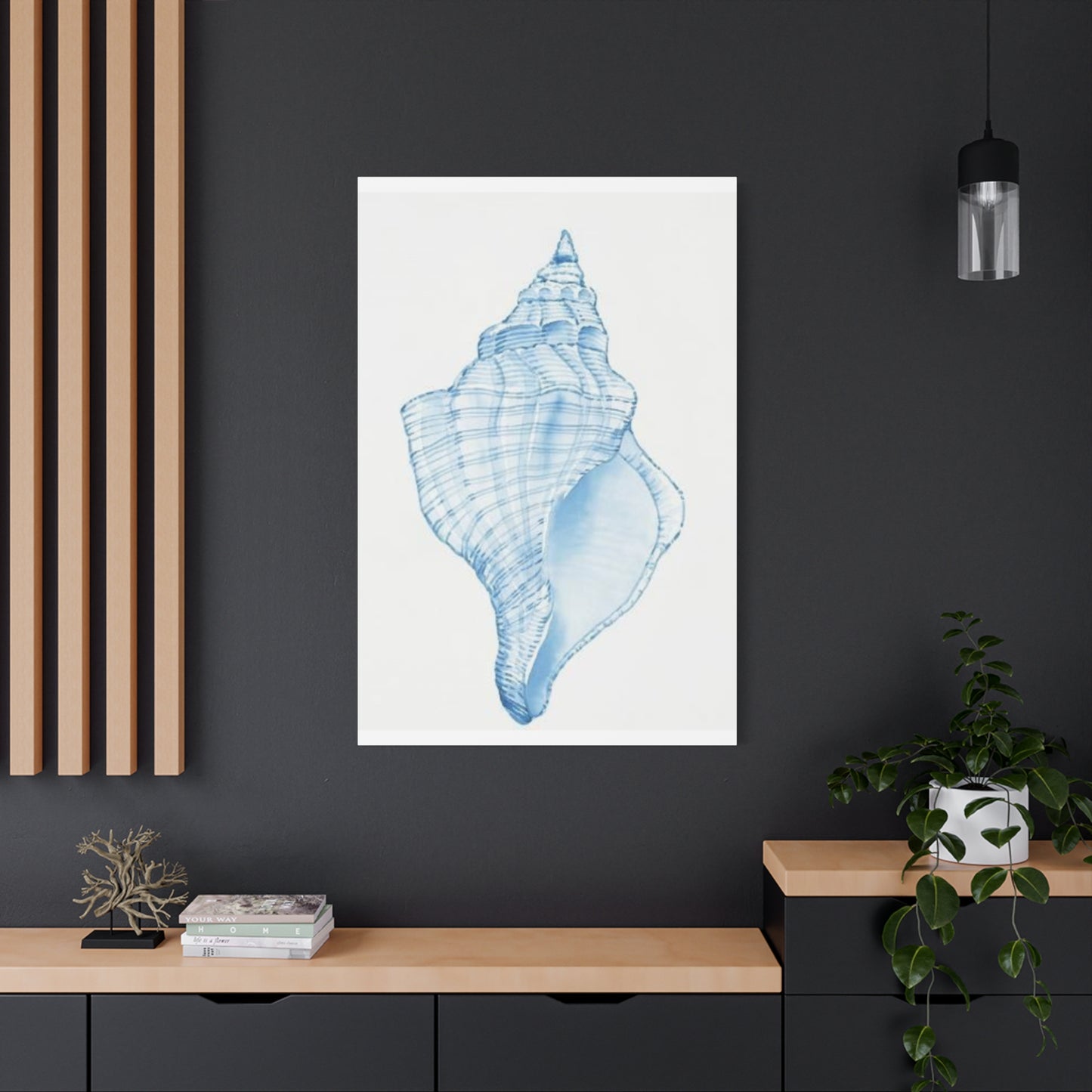Blue Shell Line Drawing Wall Art: Where Coastal Meets Contemporary
The world of interior design has witnessed a remarkable surge in the popularity of coastal-themed artwork, with blue shell line drawing art emerging as a sophisticated choice for contemporary homes. This artistic style combines the serene beauty of ocean treasures with the clean, minimalist aesthetic that defines modern living spaces. The delicate interplay between simple lines and oceanic inspiration creates artwork that speaks to both nature lovers and design enthusiasts who appreciate understated elegance.
Blue shell line drawing art represents more than just decorative pieces; it embodies a lifestyle choice that brings the calming essence of coastal living into any environment. These artistic creations capture the intricate beauty of marine shells through simplified line work, often rendered in various shades of blue that evoke the depths of the ocean and the tranquility of seaside moments. The appeal lies in their ability to transform ordinary walls into windows overlooking imaginary beaches, where the gentle rhythm of waves meets the shore.
The Artistic Foundation of Blue Shell Line Drawing Art
The creation of blue shell line drawing art requires a deep understanding of both marine biology and artistic technique. Artists who specialize in this medium spend countless hours studying the natural curves, ridges, and spirals that characterize different shell varieties. Each species presents unique challenges and opportunities for artistic interpretation, from the smooth elegance of cowrie shells to the dramatic spirals of nautilus chambers.
The artistic process begins with careful observation of real shells, allowing artists to understand the subtle variations in texture, form, and proportion that make each specimen unique. This foundational knowledge becomes crucial when translating three-dimensional objects into two-dimensional line drawings that maintain their essential character while embracing the simplicity that defines minimalist art.
Color selection plays a pivotal role in the success of blue shell line drawing art. Artists carefully choose from a spectrum of blue tones, ranging from deep navy and cobalt to soft powder blue and aquamarine. These color choices are not arbitrary but reflect the natural variations found in ocean environments, from the deep blue of open waters to the pale blue-green of shallow coastal areas where shells are commonly found.
The line weight and drawing technique employed in these artworks require considerable skill to achieve the perfect balance between detail and simplicity. Artists must decide which elements of the shell's structure to emphasize and which to simplify or omit entirely. This selective approach ensures that the final artwork maintains visual clarity while preserving the essential characteristics that make each shell recognizable and beautiful.
Minimalist Blue Shell Wall Art and Contemporary Design Principles
Minimalist blue shell wall art has become increasingly popular among homeowners and interior designers who appreciate the power of subtle, sophisticated decoration. This artistic approach aligns perfectly with contemporary design principles that emphasize clean lines, uncluttered spaces, and the strategic use of color to create visual interest without overwhelming the senses.
The minimalist approach to blue shell art involves stripping away unnecessary details while preserving the essential beauty that makes shells so captivating. This reduction process requires artistic judgment to determine which elements are crucial for maintaining the shell's identity and which can be eliminated to achieve the desired simplicity. The result is artwork that feels both familiar and fresh, recognizable yet artistically transformed.
In contemporary interiors, minimalist blue shell wall art serves multiple functions beyond mere decoration. These pieces act as focal points that draw the eye without demanding attention, creating visual anchors in rooms designed around the principles of negative space and balanced composition. The blue color palette contributes to the overall color scheme without introducing jarring contrasts that might disrupt the carefully planned aesthetic.
The versatility of minimalist blue shell wall art makes it suitable for various room types and decorating styles. In living areas, these pieces can complement neutral color schemes while adding a touch of natural inspiration. In bedrooms, they contribute to a calming atmosphere that promotes rest and relaxation. In bathrooms, they reinforce the connection to water and cleansing rituals that make these spaces feel spa-like and refreshing.
Professional interior designers often recommend minimalist blue shell wall art for clients who want to incorporate natural elements into their homes without committing to bold, statement pieces. The subtle nature of these artworks allows them to work harmoniously with existing furniture and decor, enhancing the overall design scheme rather than competing with other elements for attention.
Ocean-Inspired Blue Shell Drawing Techniques and Styles
Ocean-inspired blue shell drawing encompasses a wide range of artistic techniques and styles, each offering unique approaches to capturing the essence of marine life through simplified line work. Artists working in this genre often develop signature styles that reflect their personal interpretation of coastal beauty while maintaining the fundamental characteristics that define blue shell art.
Watercolor techniques play a significant role in creating ocean-inspired blue shell drawings, allowing artists to achieve the fluid, translucent qualities that characterize water and marine environments. The natural bleeding and blending properties of watercolor paint create organic transitions between different shades of blue, mimicking the way light filters through water and illuminates submerged shells on the ocean floor.
Ink and wash techniques offer another popular approach to ocean-inspired blue shell drawing, combining the precision of ink lines with the soft, atmospheric effects of diluted pigments. This method allows artists to create detailed line work that defines the shell's structure while using washes of blue to suggest the surrounding water environment or to add depth and dimension to the shell itself.
Digital art techniques have opened new possibilities for creating ocean-inspired blue shell drawings, allowing artists to experiment with layer effects, transparency, and color gradients that would be difficult to achieve through traditional media. Digital tools enable precise control over line weight, color saturation, and texture effects, creating artwork that can be easily reproduced and resized for various applications.
The choice of artistic technique often depends on the intended use of the artwork and the artist's personal preferences. Gallery pieces might employ more complex techniques that showcase the artist's technical skill, while commercial prints designed for home decoration might favor simpler approaches that reproduce well across different printing methods and paper types.
Contemporary ocean-inspired blue shell drawing also incorporates elements from other artistic traditions, including Japanese sumi-e painting, which emphasizes the expressive potential of simple brush strokes, and European botanical illustration, which prioritizes scientific accuracy and detailed observation of natural forms.
Blue Shell Sketch Wall Decor for Modern Living Spaces
Blue shell sketch wall decor has evolved into a sophisticated design element that bridges the gap between casual coastal styling and refined contemporary aesthetics. These artworks offer homeowners the opportunity to incorporate natural inspiration into their living spaces without resorting to literal beach themes that might feel cliched or overly themed.
The appeal of blue shell sketch wall decor lies in its ability to suggest rather than explicitly state its coastal connections. Viewers might recognize the marine inspiration immediately, or they might simply appreciate the elegant curves and pleasing color palette without consciously connecting the artwork to its oceanic origins. This dual-level appeal makes these pieces suitable for a wide range of decorating preferences and personal styles.
When selecting blue shell sketch wall decor for modern living spaces, consideration must be given to scale, proportion, and placement within the room. Large-scale pieces can serve as dramatic focal points above sofas or beds, while smaller sketches work well in groupings that create visual rhythm along hallways or in gallery wall arrangements. The key is to maintain balance between the artwork and the surrounding space, ensuring that neither overwhelms the other.
The framing and presentation of blue shell sketch wall decor significantly impacts its overall effect in modern interiors. Simple, clean frames in neutral colors allow the artwork to speak for itself, while more elaborate framing might detract from the minimalist aesthetic that makes these pieces so appealing. Many contemporary installations favor frameless mounting or floating frames that create the illusion that the artwork is suspended slightly away from the wall.
Lighting considerations play a crucial role in the effective display of blue shell sketch wall decor. Proper illumination can enhance the subtle color variations and delicate line work that characterize these pieces, while poor lighting might cause them to appear flat or washed out. Natural light from nearby windows can create interesting interactions with the blue pigments, causing them to shift and change throughout the day as lighting conditions vary.
The grouping and arrangement of multiple blue shell sketch pieces requires careful planning to achieve visual harmony without creating chaos. Professional designers often recommend odd-numbered groupings, with pieces arranged in triangular or organic compositions that feel natural rather than forced. The spacing between individual pieces should be consistent and proportional to their size, creating breathing room that allows each artwork to be appreciated individually while contributing to the overall composition.
Coastal Blue Shell Art and Regional Design Influences
Coastal blue shell art draws inspiration from various regional traditions and local marine environments, creating distinct styles that reflect the unique characteristics of different coastal areas around the world. These regional influences contribute to the rich diversity found within the broader category of coastal blue shell art, offering collectors and decorators numerous options for finding pieces that resonate with their personal experiences or aesthetic preferences.
Mediterranean coastal influences can be seen in blue shell art that emphasizes the warm, crystalline blues associated with the clear waters of the Aegean and Adriatic seas. These pieces often incorporate shells common to rocky Mediterranean shores, such as limpets and periwinkles, rendered in shades of blue that capture the intense color saturation characteristic of Mediterranean light and water.
Atlantic coastal influences produce blue shell art that reflects the cooler, deeper blues of northern ocean waters and the hardy shells that thrive in these environments. Mussel shells, scallop shells, and whelk shells frequently appear in artwork inspired by Atlantic coastal regions, often rendered in navy blues and steel blues that suggest the power and mystery of deep ocean waters.
Pacific coastal influences contribute to blue shell art that incorporates the diverse marine life found along the western shores of the Americas and the varied island chains of the Pacific Ocean. The warm currents and volcanic activity that characterize many Pacific coastal areas produce unique shell varieties that inspire artwork featuring unusual forms and exotic proportions.
Tropical coastal influences create blue shell art that celebrates the vibrant marine life found in warm, shallow waters near coral reefs and tropical islands. These pieces often feature delicate shells with intricate patterns and unusual shapes, rendered in bright turquoise and aquamarine blues that capture the clarity and warmth of tropical waters.
The incorporation of regional design influences extends beyond the choice of shell subjects to include cultural artistic traditions that inform the overall aesthetic of coastal blue shell art. Scandinavian design principles contribute to artwork that emphasizes simplicity, functionality, and connection to nature. Asian artistic traditions introduce concepts of negative space, asymmetrical balance, and the expressive potential of simple brush strokes.
Simple Blue Shell Drawing Prints and Accessibility
Simple blue shell drawing prints have democratized access to coastal-inspired artwork, making it possible for people with various budgets and living situations to incorporate these beautiful designs into their homes. The availability of high-quality prints has expanded the reach of blue shell art beyond original pieces that might be financially out of reach for many art lovers.
The printing process for simple blue shell drawing prints requires careful attention to color accuracy and detail reproduction to ensure that the final product maintains the subtle beauty and delicate line work that characterizes the original artwork. Modern printing techniques, including giclée printing and archival ink systems, have made it possible to create prints that rival the quality and longevity of original artworks.
Paper selection plays a crucial role in the success of simple blue shell drawing prints, with different paper types contributing various textures and visual qualities to the final product. Smooth, high-quality papers provide excellent detail reproduction and color saturation, while textured papers can add visual interest and a more handmade feel that some collectors prefer.
The standardization of print sizes has made it easier for consumers to find simple blue shell drawing prints that fit common frame sizes and standard furniture proportions. Popular sizes include 8x10, 11x14, and 16x20 inches, though custom sizing options are often available for those who need specific dimensions to fit their decorating plans.
Limited edition prints offer a middle ground between original artwork and mass-produced prints, providing collectors with the satisfaction of owning something somewhat exclusive while maintaining affordability. These limited runs often feature enhanced printing techniques, premium papers, or artist signatures that add value and collectibility to the pieces.
The digital distribution of simple blue shell drawing prints has created new opportunities for both artists and consumers, allowing immediate access to artwork without the delays and costs associated with traditional gallery representation and physical inventory management. Online marketplaces and artist websites have made it possible to browse extensive collections and make purchases with unprecedented convenience.
Blue Shell Silhouette Wall Art and Shadow Play
Blue shell silhouette wall art represents a refined approach to coastal decoration that emphasizes form and negative space rather than detailed representation. This artistic style reduces shells to their essential shapes, creating powerful visual statements that rely on the inherent beauty of shell forms to create impact and interest.
The creation of effective blue shell silhouette wall art requires a thorough understanding of which shell characteristics remain recognizable when reduced to simple outlines. The distinctive spiral of a nautilus shell, the fan shape of a scallop, or the elongated cone of a auger shell all translate well into silhouette form because their basic shapes are immediately recognizable even without internal detail.
Color choices for blue shell silhouette wall art often favor deeper, more saturated blues that create strong contrast against lighter backgrounds. Navy blue, royal blue, and midnight blue work particularly well for silhouette applications because they provide the visual weight necessary to make the shapes feel substantial and present rather than fragile or tentative.
The interplay between positive and negative space becomes crucial in blue shell silhouette wall art, with the surrounding area being just as important as the shell shape itself. Artists must consider how the shell silhouette will interact with the background and how the overall composition will balance areas of color with areas of empty space.
Multiple shell silhouettes can be combined to create more complex compositions that explore rhythm, repetition, and variation within a unified theme. These groupings might feature shells of different sizes arranged to create visual movement across the picture plane, or they might focus on variations within a single shell type to explore the natural diversity found within species.
The versatility of blue shell silhouette wall art makes it suitable for both traditional and contemporary interior design schemes. In traditional settings, these pieces can complement existing coastal themes without competing with more elaborate decorative elements. In contemporary spaces, they provide clean, graphic elements that align with minimalist design principles while adding natural inspiration.
Elegant Blue Shell Line Art and Sophisticated Interiors
Elegant blue shell line art represents the pinnacle of refinement in coastal-inspired artwork, combining sophisticated drawing techniques with restrained color palettes to create pieces suitable for the most discerning interior design schemes. This category of artwork appeals to collectors who appreciate technical excellence and subtle beauty over bold statements or obvious themes.
The development of elegant blue shell line art requires mastery of various drawing techniques, including contour drawing, cross-hatching, and stippling, all applied with the restraint and precision that characterize truly sophisticated artwork. Artists working in this style must possess both technical skill and artistic judgment to know when to add detail and when to embrace simplicity.
Line quality becomes paramount in elegant blue shell line art, with variations in line weight, texture, and direction contributing to the overall sophistication of the piece. Delicate lines might suggest the smooth surface of a polished shell, while slightly rougher lines could indicate natural texture or weathering. The artist's ability to control these subtle variations distinguishes professional work from amateur attempts.
Color application in elegant blue shell line art often involves multiple layers and gradual transitions that create depth and dimension while maintaining the overall simplicity that defines the style. Watercolor techniques, including wet-on-wet and wet-on-dry applications, allow for subtle color variations that suggest the natural variations found in real shells.
The subject matter for elegant blue shell line art typically focuses on shells with naturally graceful forms and interesting structural details. Chambered nautilus shells, with their perfect mathematical spirals, provide ideal subjects for this treatment, as do various types of volute shells with their elegant proportions and subtle surface patterns.
Gallery presentation of elegant blue shell line art requires careful attention to framing, matting, and lighting to ensure that the subtle qualities of the artwork are properly displayed. Museum-quality materials and conservation framing techniques protect the artwork while presenting it in the best possible light, literally and figuratively.
Beachy Blue Shell Drawing and Casual Coastal Style
Beachy blue shell drawing embraces a more relaxed and informal approach to coastal artwork, creating pieces that evoke the carefree atmosphere of beach vacations and seaside leisure. This style of artwork appeals to homeowners who want to capture the joy and relaxation associated with beach experiences without the formality that characterizes more sophisticated coastal art.
The artistic approach used in beachy blue shell drawing often incorporates looser, more expressive line work that suggests spontaneity and freedom from rigid artistic conventions. Brush strokes might be more visible, colors might be applied with less precision, and the overall composition might feel more organic and unplanned than their more formal counterparts.
Color palettes for beachy blue shell drawing often include a wider range of blue tones, incorporating everything from pale sky blue to deep ocean blue, sometimes within a single piece. These varied blues might be combined with neutral tones that suggest sand, driftwood, or weathered coastal structures, creating artwork that feels connected to the full spectrum of beach environments.
The subject matter for beachy blue shell drawing often includes shells that are commonly found during beach walks, such as cockle shells, razor clam shells, and various types of small gastropod shells that wash up on sandy shores. These familiar forms resonate with viewers who have personal experience collecting shells during beach vacations or coastal outings.
Texture plays an important role in beachy blue shell drawing, with artists often incorporating techniques that suggest the rough, weathered surfaces of shells that have been tumbled by waves and sand. Dry brush techniques, scratching, and other mark-making methods create visual interest and reinforce the connection to natural beach environments.
The informal nature of beachy blue shell drawing makes it particularly suitable for casual living spaces, including family rooms, kitchens, and children's bedrooms. These pieces work well in homes decorated with comfortable, lived-in furnishings and relaxed color schemes that prioritize comfort over formality.
Blue Shell Botanical Wall Art and Natural History Illustration
Blue shell botanical wall art represents a unique fusion of scientific illustration and artistic expression, creating artwork that serves both decorative and educational functions. This approach to shell art draws inspiration from the tradition of natural history illustration, which has long been used to document and study the natural world.
The scientific accuracy required for blue shell botanical wall art demands extensive research and careful observation of shell specimens. Artists working in this style must understand the anatomical features that distinguish different shell species and be able to reproduce these characteristics with precision while maintaining artistic appeal.
Detailed labeling and annotation often accompany blue shell botanical wall art, providing viewers with scientific names, habitat information, and other educational content that enhances the artistic experience with learning opportunities. This combination of beauty and education appeals to viewers who appreciate art that engages both aesthetic and intellectual interests.
The illustration techniques used in blue shell botanical wall art often incorporate elements from traditional botanical illustration, including precise line work, careful attention to proportion and scale, and standardized presentation formats that make it easy to compare different specimens. Watercolor techniques are particularly popular for this application because they can capture the subtle color variations and translucent qualities of real shells.
Multiple species might be presented together in blue shell botanical wall art, allowing viewers to observe the diversity within shell families or to compare shells from different marine environments. These comparative presentations can be arranged according to various criteria, including size, habitat, or evolutionary relationships.
The educational value of blue shell botanical wall art makes it particularly suitable for certain types of interior spaces, including studies, libraries, and children's rooms where learning and curiosity are encouraged. These pieces can spark interest in marine biology, natural history, and environmental conservation while providing beautiful decoration.
Natural Blue Shell Sketches and Artistic Authenticity
Natural blue shell sketches embrace an unpolished, authentic aesthetic that celebrates the immediacy and spontaneity of drawing from life. This approach to shell art prioritizes artistic expression and personal vision over technical perfection, creating pieces that feel genuine and emotionally engaging.
The sketching process for natural blue shell sketches often involves working directly from shell specimens, allowing artists to capture the subtle details and unique characteristics that make each shell individual. This direct observation approach results in artwork that feels fresh and authentic, with the small imperfections and variations that characterize hand-drawn work.
Line quality in natural blue shell sketches tends to be varied and expressive, with artists using different types of marks to suggest various aspects of the shell's surface and structure. Confident, flowing lines might indicate smooth surfaces, while shorter, more tentative marks could suggest texture or areas of uncertainty in the artist's observation.
The color application in natural blue shell sketches often reflects the experimental nature of the sketching process, with artists trying different approaches and techniques within a single piece. This experimentation might result in areas of varying intensity or different application methods that create visual interest and reinforce the handmade quality of the work.
Composition in natural blue shell sketches frequently embraces asymmetry and unconventional cropping that reflects the way subjects might actually be encountered during sketching sessions. Shells might be partially cut off by the edge of the paper, or they might be positioned at unusual angles that create dynamic, engaging compositions.
The authenticity of natural blue shell sketches makes them particularly appealing to collectors who value original artistic expression over polished commercial artwork. These pieces offer a glimpse into the artist's working process and thought patterns, creating a more intimate connection between artist and viewer.
Soft Blue Shell Line Drawings and Gentle Aesthetics
Soft blue shell line drawings represent a refined approach to coastal art that emphasizes subtlety, gentleness, and understated beauty. This artistic style creates pieces that feel calm and soothing, making them ideal for spaces where relaxation and tranquility are priorities.
The line quality used in soft blue shell line drawings tends to be delicate and refined, with consistent weight and smooth, flowing curves that create a sense of harmony and peace. Artists working in this style often favor lighter touch and more tentative marks that suggest rather than boldly state the shell's form and structure.
Color choices for soft blue shell line drawings typically include the lighter end of the blue spectrum, incorporating pale blues, powder blues, and blue-grays that create gentle, non-aggressive visual experiences. These softer colors work particularly well in bedrooms, nurseries, and other spaces where calm atmospheres are desired.
The composition of soft blue shell line drawings often incorporates generous amounts of white space, allowing the delicate shell forms to float gracefully within the picture plane without feeling cramped or overwhelming. This use of negative space contributes to the overall sense of tranquility that characterizes this artistic approach.
Multiple shells might be arranged in soft blue shell line drawings with careful attention to creating visual flow and gentle movement that guides the viewer's eye through the composition without jarring transitions or abrupt changes in direction. The overall effect should feel like a visual meditation on the beauty of natural forms.
The versatility of soft blue shell line drawings makes them suitable for a wide range of interior design schemes, from minimalist contemporary to traditional coastal styles. Their gentle presence allows them to complement existing decor without competing for attention or disrupting carefully planned color schemes.
Blue Shell Art for Coastal Spaces and Environmental Harmony
Blue shell art for coastal spaces represents a natural marriage between artwork and environment, creating harmonious relationships between interior design and the surrounding natural landscape. This approach to coastal decoration acknowledges the unique characteristics of seaside living and creates artwork that enhances rather than competes with ocean views and coastal light.
The selection of blue shell art for coastal spaces must consider the specific environmental conditions that characterize seaside living, including high humidity, salt air, and intense sunlight that can affect both the artwork and its presentation. Conservation framing and UV-protective glazing become important considerations for preserving artwork in these challenging conditions.
Color coordination between blue shell art and coastal environments requires understanding how natural coastal light affects color perception throughout the day. The bright, often harsh light found in coastal areas can wash out subtle colors while intensifying bolder ones, making color selection crucial for achieving the desired visual effect.
The scale of blue shell art for coastal spaces often needs to be larger than artwork intended for interior environments because coastal spaces frequently feature high ceilings, large windows, and expansive views that can make small artwork appear insignificant. Appropriately scaled pieces help create visual anchors that ground interior spaces and provide human-scaled focal points.
Window placement and natural light sources significantly impact the effectiveness of blue shell art in coastal spaces. Artwork positioned to take advantage of filtered natural light can create stunning visual effects as the light changes throughout the day, while pieces placed in direct sunlight might fade or become difficult to view during certain times.
The integration of blue shell art with coastal architecture requires consideration of existing design elements, including exposed beams, natural materials, and indoor-outdoor living spaces that blur the boundaries between interior and exterior environments. Successful integration creates seamless transitions that enhance the overall coastal living experience.
Blue Shell Drawing Canvas Prints and Modern Production Methods
Blue shell drawing canvas prints represent the intersection of traditional artistic subjects with contemporary production techniques, creating affordable artwork options that maintain visual impact while providing the durability and presentation advantages of canvas mounting. This production method has made high-quality coastal artwork accessible to a broader range of consumers.
The canvas printing process for blue shell drawing canvas prints requires careful color management to ensure that the subtle blue tones characteristic of this artwork translate accurately to the canvas substrate. Different canvas textures can affect how colors appear and how much detail is visible in the final product, making material selection crucial for achieving optimal results.
Stretching and mounting techniques for blue shell drawing canvas prints must account for the weight and tension requirements of canvas while ensuring that the artwork remains flat and properly aligned. Professional stretching prevents warping, sagging, and other distortions that could affect the artwork's appearance over time.
The durability advantages of blue shell drawing canvas prints make them particularly suitable for high-traffic areas and spaces where traditional framed artwork might be impractical. Canvas prints can withstand minor impacts and environmental variations better than paper-based artworks, making them ideal for busy households and commercial applications.
Size flexibility represents one of the major advantages of blue shell drawing canvas prints, with production methods that can accommodate everything from small accent pieces to room-sized installations. This scalability allows consumers to select artwork proportions that perfectly match their space requirements and design goals.
Gallery wrapping techniques for blue shell drawing canvas prints extend the artwork around the edges of the stretcher frame, eliminating the need for traditional framing while creating a clean, contemporary presentation that works well in modern interior settings. Alternative edge treatments provide additional customization options for different aesthetic preferences.
Calm and Coastal Blue Shell Art and Emotional Resonance
Calm and coastal blue shell art taps into the deep emotional connections many people feel with ocean environments, creating artwork that provides psychological benefits beyond mere decoration. The soothing qualities of blue colors combined with the organic forms of shells create visual experiences that can reduce stress and promote relaxation.
Color psychology research has demonstrated that blue tones have measurable effects on human emotional states, generally promoting feelings of calm, trust, and stability. When applied to coastal shell art, these psychological effects are enhanced by associations with positive beach experiences and the natural rhythms of ocean environments.
The organic forms found in calm and coastal blue shell art connect viewers with natural patterns and proportions that humans find inherently pleasing and comforting. The mathematical relationships found in shell spirals, such as the golden ratio, may contribute to the aesthetic appeal of these forms at a subconscious level.
Meditation and mindfulness practices often incorporate visual focal points that help practitioners maintain concentration and achieve relaxed mental states. Calm and coastal blue shell art can serve this function, providing gentle visual anchors that support contemplative practices and stress reduction techniques.
The versatility of calm and coastal blue shell art makes it suitable for various therapeutic and wellness applications, including healthcare environments, spa facilities, and meditation spaces where visual elements contribute to overall healing and relaxation goals. The non-threatening nature of shell imagery makes it appropriate for sensitive populations and clinical settings.
Biophilic design principles recognize the human need for connection with natural elements, even in built environments. Calm and coastal blue shell art satisfies this need by bringing natural forms and colors into interior spaces, potentially improving occupant wellbeing and satisfaction with their living or working environments.
Contemporary Applications and Interior Design Integration
The integration of blue shell line drawing art into contemporary interior design requires understanding current trends while maintaining timeless appeal that will remain relevant as design fashions evolve. Successful integration creates cohesive design schemes that feel both current and enduring.
Current color trends in interior design often emphasize neutral palettes with carefully selected accent colors, making the subtle blue tones found in shell art ideal for adding color interest without overwhelming neutral design schemes. The organic nature of shell forms provides visual relief from the geometric lines that dominate contemporary furniture and architecture.
Lighting design plays an increasingly important role in contemporary interiors, with artwork serving as both decorative elements and components in overall lighting schemes. Blue shell line drawing art can be enhanced with accent lighting that creates dramatic shadows and highlights, adding depth and visual interest to wall compositions.
Mixed media approaches to contemporary interior design often combine artwork with other decorative elements, including sculptural objects, plants, and textural elements that create rich, layered environments. Blue shell art can serve as a unifying element that ties together disparate components while maintaining its own distinct identity.
Smart home technology integration affects how artwork is selected, displayed, and managed in contemporary interiors. Digital displays and changeable art systems allow for more flexibility in artwork selection, while traditional pieces like blue shell line drawing art provide stable, non-electronic focal points that balance high-tech environments.
Sustainability considerations increasingly influence contemporary interior design choices, making artwork created through environmentally conscious methods and materials more appealing to environmentally aware consumers. Blue shell art that incorporates sustainable practices and materials aligns with broader environmental values while providing beautiful decoration.
Artistic Techniques and Technical Considerations
The creation of exceptional blue shell line drawing art requires mastery of various technical skills and artistic techniques that contribute to the overall quality and effectiveness of the finished work. Understanding these technical aspects helps both artists and collectors appreciate the complexity involved in creating seemingly simple artwork.
Drawing fundamentals form the foundation of all successful blue shell line drawing art, with artists needing to master proportion, perspective, and observational skills that allow accurate representation of three-dimensional shell forms on two-dimensional surfaces. These skills are developed through extensive practice and study of actual shell specimens.
Color theory knowledge becomes crucial when working with the limited blue palette typical of shell art, requiring artists to understand how different blue tones interact with each other and with neutral colors to create depth, interest, and visual harmony. Understanding warm and cool blue variations helps create artwork that feels balanced and professionally executed.
Paper and substrate selection significantly affects the final appearance of blue shell line drawing art, with different materials contributing various textures, color saturation levels, and archival properties that impact both the immediate visual effect and the long-term preservation of the artwork. Professional artists often experiment with multiple substrate options to find the best match for their artistic vision.
Ink and paint quality considerations become important for artists creating work intended for sale or exhibition, with archival materials ensuring that the artwork will maintain its appearance over time. Understanding how different pigments interact with various substrates helps artists make informed choices about materials and techniques.
Tool selection affects both the working process and the final appearance of blue shell line drawing art, with different pens, brushes, and drawing implements contributing unique mark-making qualities that enhance or detract from the overall artistic effect. Professional artists often maintain extensive tool collections to ensure they have the right implement for each specific artistic challenge.
Market Trends and Commercial Applications
The commercial market for blue shell line drawing art has expanded significantly in recent years, driven by increased interest in coastal living themes and the growing popularity of minimalist design aesthetics. Understanding market trends helps both artists and consumers make informed decisions about creating and purchasing shell art.
Home decor retailers have embraced blue shell line drawing art as a popular category that appeals to customers seeking coastal themes without the clichéd elements often associated with beach house decoration. This mainstream acceptance has created opportunities for both established artists and newcomers to reach broader audiences.
Online marketplaces have revolutionized the distribution of blue shell line drawing art, allowing artists to reach global audiences while providing consumers with access to artwork from artists they might never encounter through traditional gallery channels. This democratization of the art market has increased both opportunities and competition within the field.
Custom artwork services have become increasingly popular, with consumers seeking personalized blue shell line drawing art that reflects their specific experiences or preferences. These services allow artists to create unique pieces while providing consumers with artwork that has personal significance beyond mere decoration.
Commercial applications of blue shell line drawing art extend beyond home decoration to include hospitality environments, healthcare facilities, and corporate offices where coastal themes contribute to desired atmospheric goals. These commercial applications often require different considerations regarding size, durability, and maintenance compared to residential uses.
Licensing opportunities allow successful blue shell line drawing art to reach even broader audiences through reproduction on various products, including textiles, wallpapers, and decorative accessories. These licensing arrangements can provide ongoing income streams for artists while making their work available to consumers at various price points.
Cultural and Historical Context
Blue shell line drawing art exists within a rich cultural and historical context that includes traditions of marine art, scientific illustration, and coastal living that have evolved over centuries. Understanding this context enriches appreciation of contemporary shell art while providing insight into its enduring appeal.
Maritime artistic traditions have long celebrated the beauty and mystery of ocean life, with shell motifs appearing in decorative arts, architectural elements, and fine art across many cultures and time periods. These historical precedents provide legitimacy and context for contemporary blue shell line drawing art.
Scientific illustration traditions, particularly those developed during the age of exploration and natural history study, established many of the observational and representational techniques still used in contemporary shell art. The legacy of scientific accuracy combined with artistic beauty continues to influence how artists approach shell subjects.
Colonial and maritime trade histories have spread appreciation for shell art across different cultures and geographic regions, creating shared visual vocabularies that make shell imagery universally recognizable and appealing. These historical connections help explain the continued popularity of shell themes in contemporary art.
Indigenous artistic traditions from coastal cultures around the world have contributed unique perspectives on shell representation and marine life celebration, enriching the overall tradition of shell art with diverse cultural viewpoints and artistic approaches. Contemporary artists often draw inspiration from these traditional sources while developing their own distinctive styles.
Regional cultural variations in coastal living and marine appreciation create different subcategories within blue shell line drawing art, each reflecting local environmental conditions, available shell species, and cultural values related to ocean life and coastal environments.
Environmental Conservation and Artistic Responsibility
The creation and appreciation of blue shell line drawing art carries implicit connections to marine environmental conservation and sustainable practices that responsible artists and collectors increasingly acknowledge. These environmental considerations add depth and meaning to artwork while contributing to broader conservation efforts.
Marine conservation awareness has grown significantly in recent years, with artists and collectors recognizing their role in promoting appreciation for marine life and ocean environments through their artistic choices and collecting decisions. Blue shell line drawing art can serve as a gentle introduction to marine conservation topics for viewers who might not otherwise engage with environmental issues.
Sustainable art practices include considerations of material sourcing, production methods, and long-term environmental impact that conscious artists incorporate into their working processes. These practices might include using environmentally friendly materials, minimizing waste, and choosing production methods with reduced environmental impact.
Educational opportunities exist within blue shell line drawing art to inform viewers about marine ecosystems, shell biology, and conservation challenges facing ocean environments. Artists can incorporate educational elements into their work while maintaining aesthetic appeal, creating artwork that serves multiple functions.
Ethical collecting practices for shell specimens used as artistic reference materials ensure that artists are not contributing to environmental damage while pursuing their artistic goals. Many artists now rely on found specimens, photographs, or museum collections rather than purchasing shells that might have been harvested from sensitive marine environments.
Partnership opportunities between artists and conservation organizations can amplify the environmental message of blue shell line drawing art while supporting important conservation work. These partnerships might include donating proceeds from art sales to conservation efforts or creating artwork specifically designed to raise awareness about marine environmental issues.
Conclusion:
Blue Shell Line Drawing wall art perfectly marries the serene beauty of coastal themes with the sleek sophistication of contemporary design. Through simple yet expressive lines paired with soothing blue tones, this art style captures the delicate essence of seashells while maintaining a modern minimalistic aesthetic. The result is a piece that brings both tranquility and style to any living space.
Ideal for those seeking a subtle nod to the ocean without overwhelming their decor, blue shell line drawings add a refined touch that complements a wide range of interiors—from coastal cottages and beach houses to urban apartments with modern flair. The clean lines and calming color palette invite a sense of calm and freshness, making these artworks excellent choices for bedrooms, bathrooms, or living rooms where relaxation is key.
Beyond aesthetics, blue shell line art evokes memories of the sea, symbolizing renewal, protection, and natural beauty. It’s a reminder of peaceful coastal moments, brought indoors with contemporary grace.
In essence, blue shell line drawing wall art offers a harmonious blend of coastal inspiration and modern artistry. It transforms walls into elegant statements that celebrate nature’s simplicity and beauty, making your space feel both stylish and serenely connected to the shore.

















